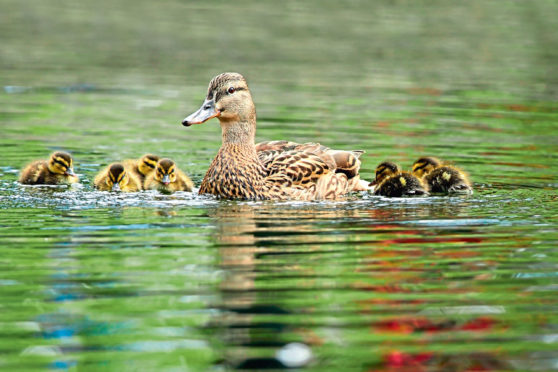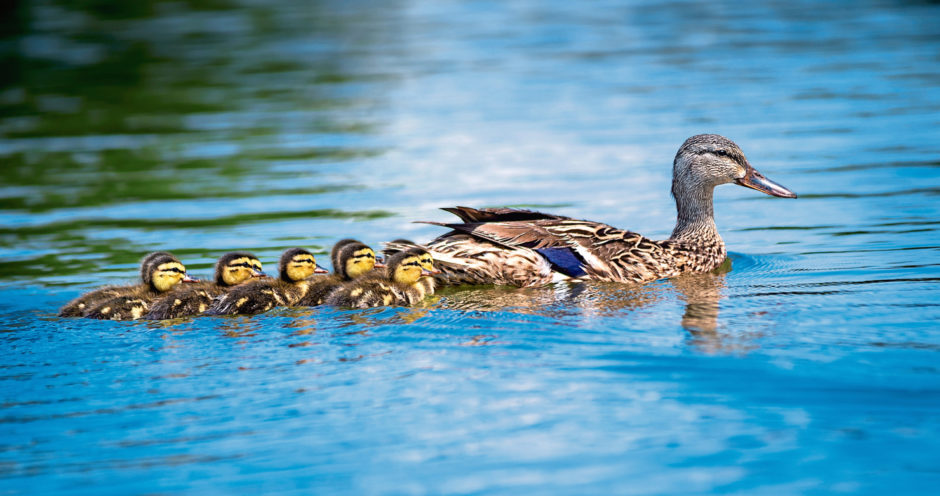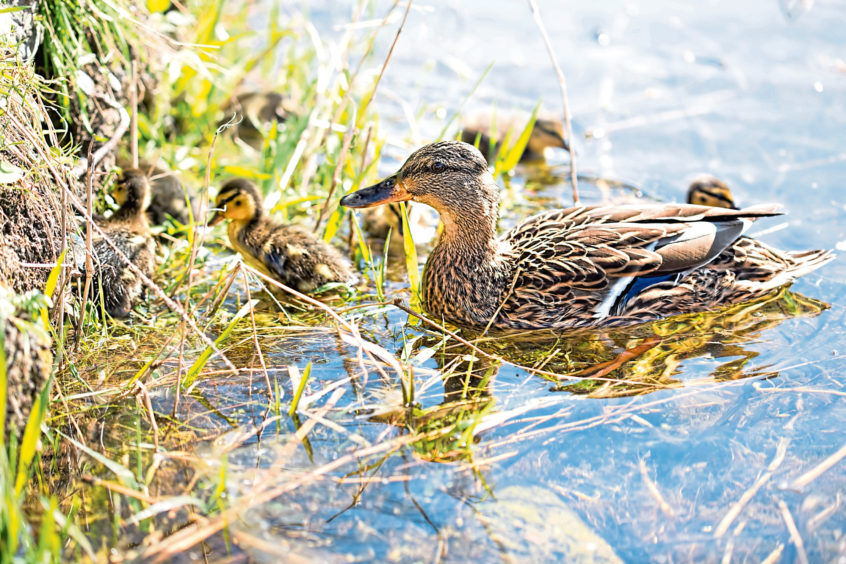Water birds such as great crested grebes will carry their chicks on their back for protection, whilst other birds, such as skuas and gulls, will actively divebomb any intruder to keep them away from their young.
The mother mallard with her ducklings had seen me approach along the riverbank from some distance away, but I had already spotted her, so the advantage lay with me.
I was too far away to hear, but presumably she uttered some kind of soft call to alert the ducklings of imminent danger. Immediately, all seven of the wee fluffy bundles gathered together, and purposefully, but with great care to ensure there was no tell-tale ripple from their water wakes, sidled into the far bank and crammed themselves under some tree roots.
There was no room for the mother in this bankside recess, so instead she lay frozen and prostrate nearby upon the water’s edge – half her body on the muddy bank and her head pointing downwards into the river with her bill partially submerged, so that she could just breathe.
In effect, she was imitating a small log that was half-in and half-out the water, the body outline totally broken-up by merging herself between river and land.
It was a remarkable piece of camouflage, a flamboyant exhibition of guile to protect her precious ducklings. After all, this is her raison d’etre; to keep the mallard generations going, or to be more precise, to pass on her own genetic lineage.
Which leads to the obvious question; how did she know to do that, to duck and to dive, if you pardon the pun, to instinctively use such trickery to conceal herself and her brood from potential threat?
Had she seen her own mother react in the same way when she herself was a duckling and learnt from that – or is such behaviour genetic and pre-programmed.
I don’t know the answer to that, but I suspect it is all wired into the genes, although there are probably also some learning elements involved, possibly to fine-tune such tactics.
The urge to protect the family is one of the strongest in nature and all kinds of clever ruses are utilised to confuse a predator. One of the most compelling is the broken wing act, which I’ve seen mallards employ, as well as wading birds such as oystercatchers.
Here, on the approach of a fox or other predator, the mother limps along the ground dragging one wing as if injured, deliberately drawing the pursuer away from her chicks. Quite amazing. Equally intriguing is why hasn’t the fox evolved to become wise to such a ploy? Perhaps the instinct to chase a weak animal is more important to survival than working out whether some deception is at work.
And, of course, a vixen is as equally protective of her offspring as any mallard. I’ve learnt over the years to be careful when visiting fox dens, because if the mother has the slightest inclination that its location has been compromised, she will quickly move the cubs to a new site.
Motherly care – it is the keystone of nature, and, of course, the bedrock of humankind, too.












